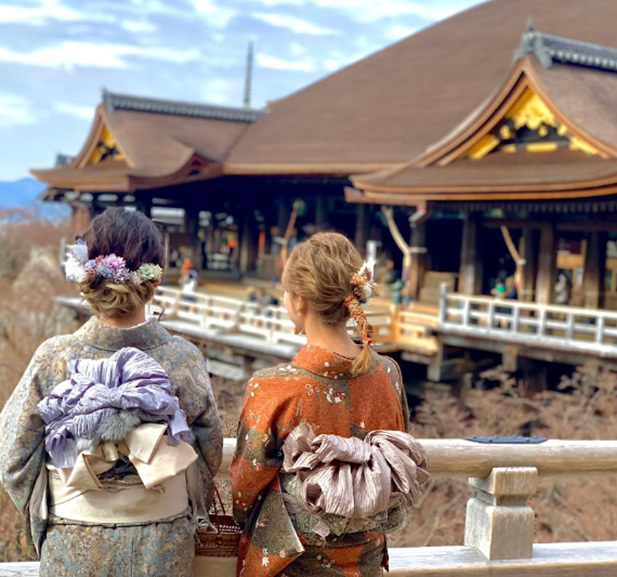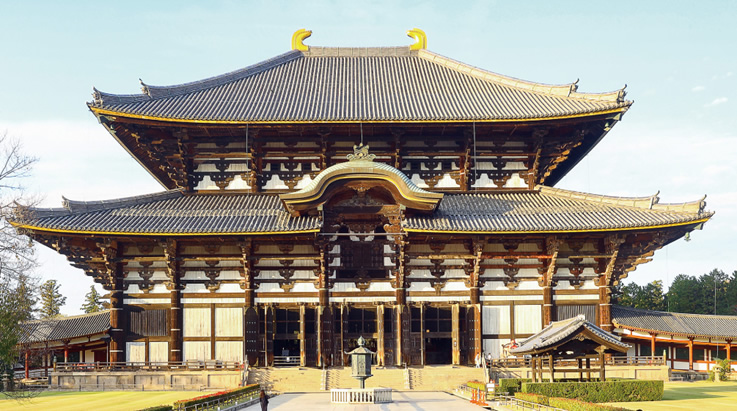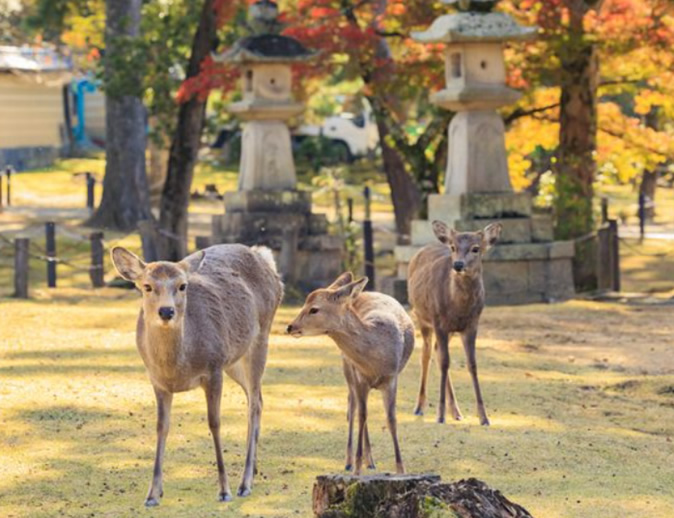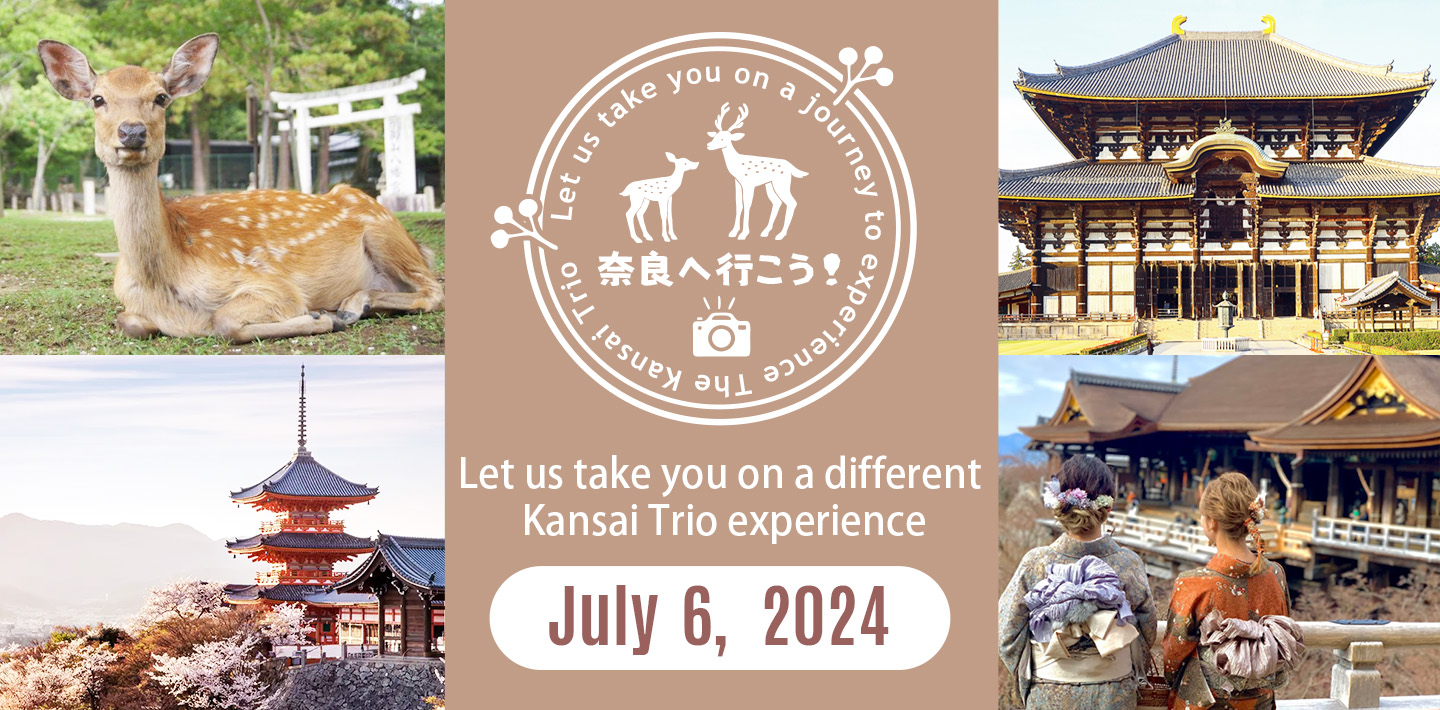The Kansai Trio
【Kiyomizu-dera Temple】

Kiyomizu-dera is a temple located in the Higashiyama ward of Kyoto City, Kyoto Prefecture, Japan. It was founded around 778 AD by the monk Enchin. The temple's mountain name is Mount Otowa, and it is primarily dedicated to the Bodhisattva Avalokitesvara (Kannon). Originally belonging to the Hosso sect, it has since become independent and is now the head temple of the Kitahosso sect.
Kiyomizu-dera is the oldest temple in Kyoto, established in 778 AD, covering an area of 130,000 square meters. It was founded by the monk Kengyo (later renamed Enchin) from Nara's Shiga-in temple. However, it suffered damage over the years due to wars and disasters. It was reconstructed in its current form by the third Tokugawa shogun, Tokugawa Iemitsu, in 1633.
The temple follows a bracketing system of construction. The main hall is 19 meters wide and 16 meters deep, with a suspended stage in front, supported by 139 tall wooden pillars. The temple's architecture is grand and ingenious, constructed without the use of nails. The six-tiered pagoda within the temple is a rare sight in Japan.
【Todai-ji Temple】

Kiyomizu-dera is a temple located in the Higashiyama ward of Kyoto City, Kyoto Prefecture, Japan. It was founded around 778 AD by the monk Enchin. The temple's mountain name is Mount Otowa, and it is primarily dedicated to the Bodhisattva Avalokitesvara (Kannon). Originally belonging to the Hosso sect, it has since become independent and is now the head temple of the Kitahosso sect.
Kiyomizu-dera is the oldest temple in Kyoto, established in 778 AD, covering an area of 130,000 square meters. It was founded by the monk Kengyo (later renamed Enchin) from Nara's Shiga-in temple. However, it suffered damage over the years due to wars and disasters. It was reconstructed in its current form by the third Tokugawa shogun, Tokugawa Iemitsu, in 1633.
The temple follows a bracketing system of construction. The main hall is 19 meters wide and 16 meters deep, with a suspended stage in front, supported by 139 tall wooden pillars. The temple's architecture is grand and ingenious, constructed without the use of nails. The six-tiered pagoda within the temple is a rare sight in Japan.
【Nara Park】

Nara Park is a municipal park located at the foot of Mount Wakakusa in Nara City, Nara Prefecture, Japan. It is a famous scenic spot in the area.
The official name of the urban park is "Nara Prefectural Urban Park, Nara Park," covering a total area of 502 hectares. It includes surrounding landmarks such as Kofuku-ji Temple, Todai-ji Temple, Kasuga Shrine, and the Nara National Museum, with a combined area of approximately 660 hectares. The term "Nara Park" typically refers to the area that encompasses these surrounding temples and shrines.
The park is home to numerous national treasures and UNESCO World Heritage sites. The Nara Daibutsu (Great Buddha) and the approximately 1,200 deer are the main attractions for tourists visiting Nara. Additionally, events such as the Todai-ji Shunie (Monk's Fire Ritual), Nara Tokae (Nara Lantern Festival), Shosoin Exhibition, and Kasuga Wakamiya On-Matsuri (Kasuga Wakamiya Shrine Festival) showcase the rich cultural heritage of the ancient capital. During spring, the park becomes a popular spot for cherry blossom viewing, selected as one of Japan's top 100 cherry blossom viewing spots, with the area around the Ukimido Pavilion being a particularly popular spot for hanami (flower viewing).
The park is home to numerous national treasures and UNESCO World Heritage sites. The Nara Daibutsu (Great Buddha) and the approximately 1,200 deer are the main attractions for tourists visiting Nara. Additionally, events such as the Todai-ji Shunie (Monk's Fire Ritual), Nara Tokae (Nara Lantern Festival), Shosoin Exhibition, and Kasuga Wakamiya On-Matsuri (Kasuga Wakamiya Shrine Festival) showcase the rich cultural heritage of the ancient capital. During spring, the park becomes a popular spot for cherry blossom viewing, selected as one of Japan's top 100 cherry blossom viewing spots, with the area around the Ukimido Pavilion being a particularly popular spot for hanami (flower viewing).
【ITINERARY PLANNING】
| 8:00 | OSAKA INTERNATIONAL CONVENTION CENTER |
| 9:00 | KIYOMIZU-DERA TEMPLE |
| 11:30 | LUNCH |
| 13:00 | FUSHIMIINARI SHRINE |
| 15:00 | NARA PARK & TOUDAIJI TEMPLE |
| 18:00 | OSAKA INTERNATIONAL CONVENTION CENTER |
Rates
| 1. | Conference delegate: $ 150 USD per person |
| 2. | Accompanying person: $ 160 USD per person |
Reservation and Payment Deadline / June 21, 2024
This itinerary will provide travel insurance for all participants: participants are required to provide
1. Full Name, 2. Age, 3. Passport Number.
Attention
| 1. | The schedule and itinerary may be changed due to unpredictable factors such as traffic and weather. |
| 2. | The reservation will be automatically cancelled if no payment is received by June 21, 2024. |
| 3. | A minimum of 10 people is required to operate a tour. If the minimum is not reached, the tour will be cancelled and a noticed with method of refund will be sent to the registrants from June 28th, 2024. |
| 4. | If participants cancel the reservation for personal reasons, the cancelation charge will be applied as below:
From June 21, 2024: Nonrefundable |
Important Information
| 1. | This tour is recommended to participants over 6-year-old due to long travel time. |
| 2. | We recommend you to wear the casual clothes and comfortable shoes. |
| 3. | If the attraction is invisible due to weather conditions, the tour will not be canceled and fees will not be refunded. |
| 4. | Participants should follow the tour guide’s instructions; HEF and the tour guide are not responsible for participants’ leave without notice and personal activities. |
| 5. | The tour bus will not wait for any personal excuse. |

 Kiyomizu-dera is a temple located in the Higashiyama ward of Kyoto City, Kyoto Prefecture, Japan. It was founded around 778 AD by the monk Enchin. The temple's mountain name is Mount Otowa, and it is primarily dedicated to the Bodhisattva Avalokitesvara (Kannon). Originally belonging to the Hosso sect, it has since become independent and is now the head temple of the Kitahosso sect.
Kiyomizu-dera is a temple located in the Higashiyama ward of Kyoto City, Kyoto Prefecture, Japan. It was founded around 778 AD by the monk Enchin. The temple's mountain name is Mount Otowa, and it is primarily dedicated to the Bodhisattva Avalokitesvara (Kannon). Originally belonging to the Hosso sect, it has since become independent and is now the head temple of the Kitahosso sect. Kiyomizu-dera is a temple located in the Higashiyama ward of Kyoto City, Kyoto Prefecture, Japan. It was founded around 778 AD by the monk Enchin. The temple's mountain name is Mount Otowa, and it is primarily dedicated to the Bodhisattva Avalokitesvara (Kannon). Originally belonging to the Hosso sect, it has since become independent and is now the head temple of the Kitahosso sect.
Kiyomizu-dera is a temple located in the Higashiyama ward of Kyoto City, Kyoto Prefecture, Japan. It was founded around 778 AD by the monk Enchin. The temple's mountain name is Mount Otowa, and it is primarily dedicated to the Bodhisattva Avalokitesvara (Kannon). Originally belonging to the Hosso sect, it has since become independent and is now the head temple of the Kitahosso sect. Nara Park is a municipal park located at the foot of Mount Wakakusa in Nara City, Nara Prefecture, Japan. It is a famous scenic spot in the area.
Nara Park is a municipal park located at the foot of Mount Wakakusa in Nara City, Nara Prefecture, Japan. It is a famous scenic spot in the area.